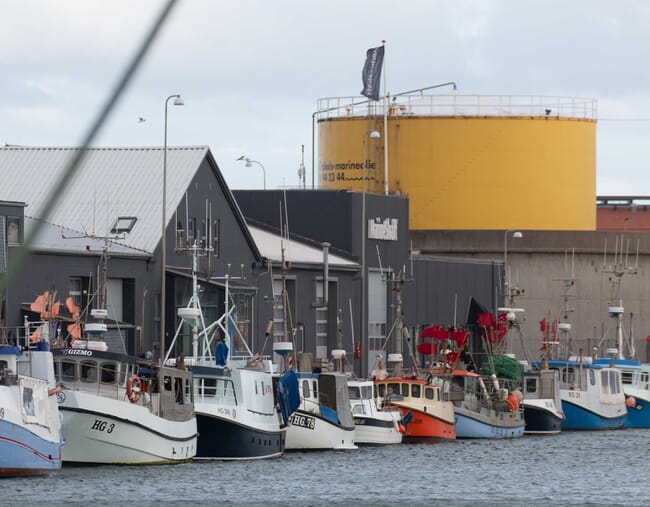
© Hovaldt A/S Architects
Led by Norwegian entrepreneurs Samuel Muren and Håkon Volden, the project called Onnest, brings together a multidisciplinary team, including architecture firms Hovaldt, Lendager, Tina-Henriette Kristiansen and Schønherr, alongside sustainability and aquaculture experts. Together, they aim to demonstrate how food production can be reimagined through circular principles, efficient resource use and improved fish welfare.
‘’This is not just a factory,’’ said Dorte Hovaldt, chief executive officer of Hovaldt A/S Architects, in a press release. ‘’We are designing and developing an industrial facility that does not look like anything we've seen before. We want to create a place that invites the public inside, communicates circularity, integrates with the surrounding Ice Age landscape and operates with minimal waste.’’
A circular approach to aquaculture
The facility will prioritise zero-waste operations, local resource loops and fish health. The team plans to use no medication or vaccines, minimal resource consumption, maximum reuse of waste streams and circular food chains.
Plans include producing feed from algae grown on-site, eliminating the need for imported soy, a common aquafeed ingredient. Sludge and nutrient waste will be recycled to support algae cultivation, while excess heat from nearby industrial operations, such as hydrogen production, will be repurposed within the facility.
‘’This will be a consulting project with an unprecedented level of knowledge. Everything is conceived in circular terms,’’ explained Nicholas Duxbury Ransome, chief executive officer of Lendager.
According to Rasmus Stougaard, partner at Schønherr, the project addresses the high resource demands of animal-based food production. In Denmark, 80 percent of farmland is used to grow livestock feed, despite low protein efficiency. Cows, for instance, consume far more protein than they produce, while trout offer a much higher protein conversion rate, making them a more sustainable option for food production.
Focus on fish welfare
Onnest’s vision is to create fish farming that not only benefits the environment but also improves human health. With an uncompromising focus on fish welfare and resource efficiency, the facility is set to produce high-quality fish with a significantly better nutritional profile than conventional farmed fish.
‘’Conventional farmed fish typically have suboptimal nutritional content. Yet fish remain an important source of essential amino acids, fatty acids and proteins. We aim to produce fish with better muscle quality and higher omega-3 content, without the use of medication. We aim to raise survival rates to over 95 percent – which places high demands on both technical systems and architecture,’’ said Nicholas Duxbury Ransome and Dorte Hovaldt.
With backing from Hjørring Municipality and support from a growing network of local and international partners, the Onnest model is intended to be replicable in other regions. The team believes the concept could be applied in countries such as the Netherlands, France and even Japan.


